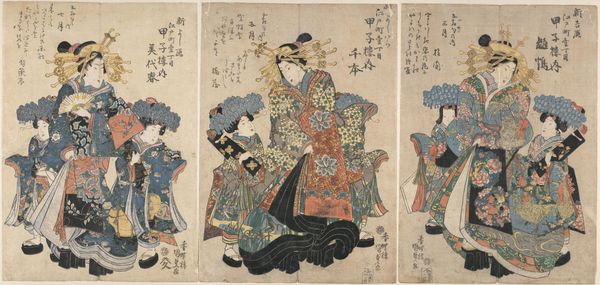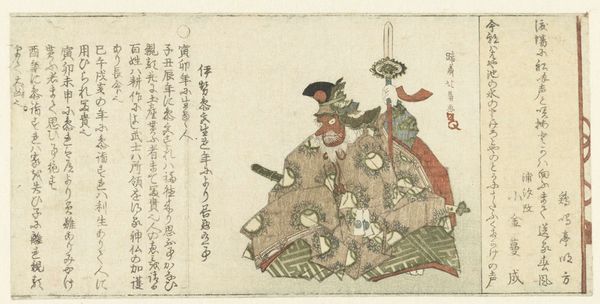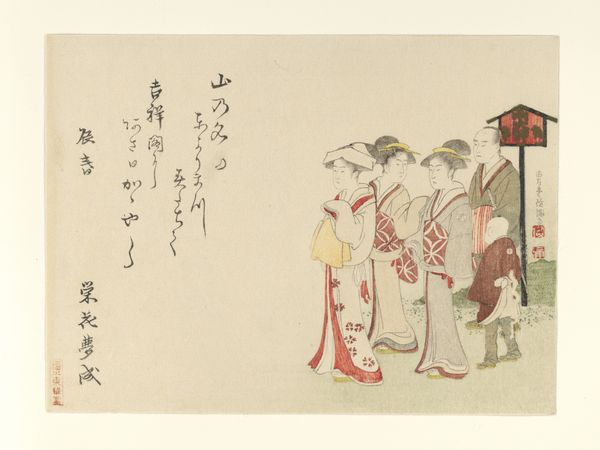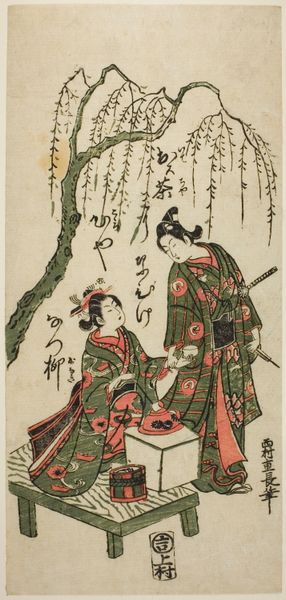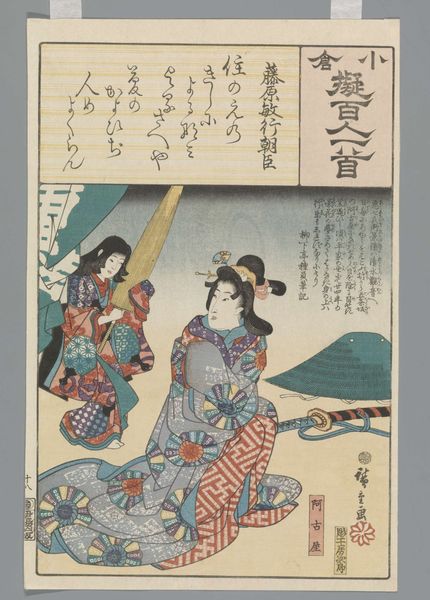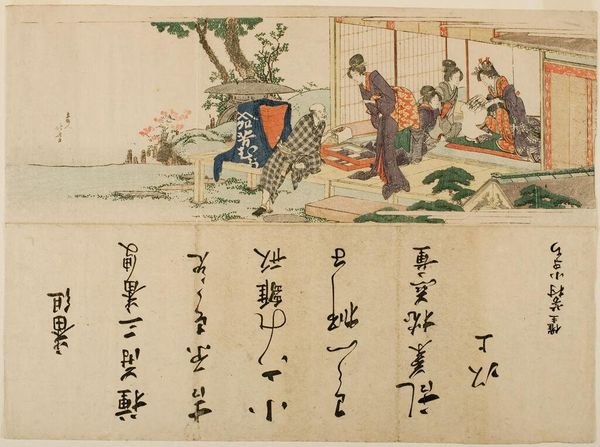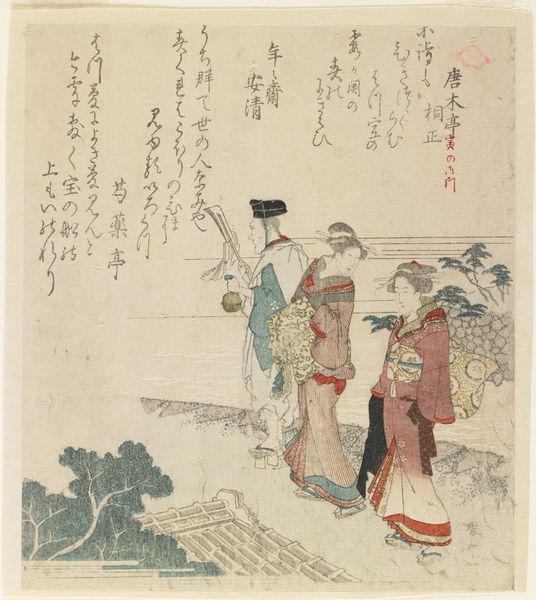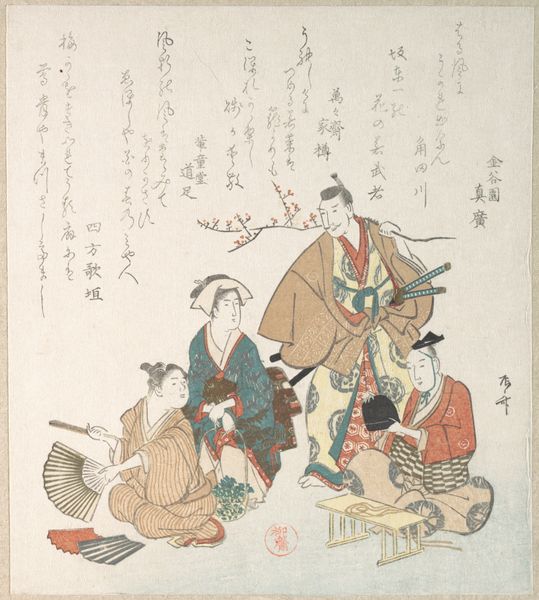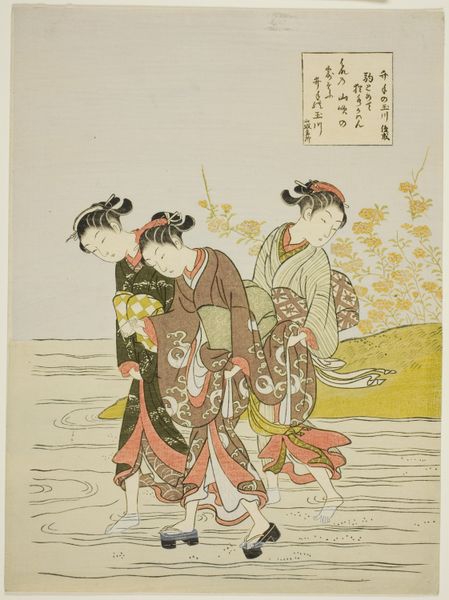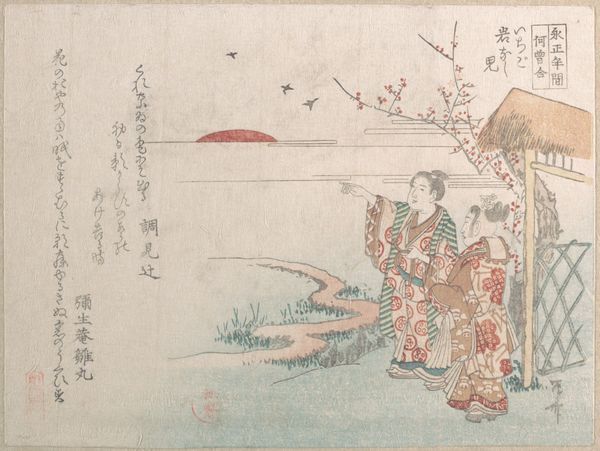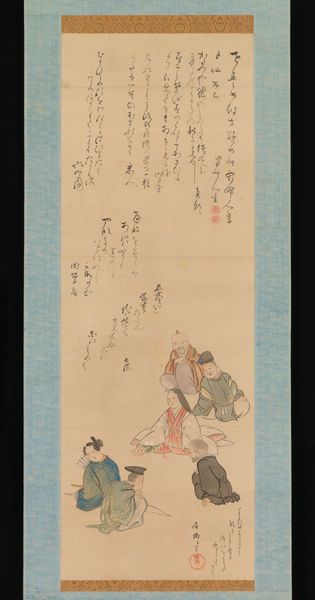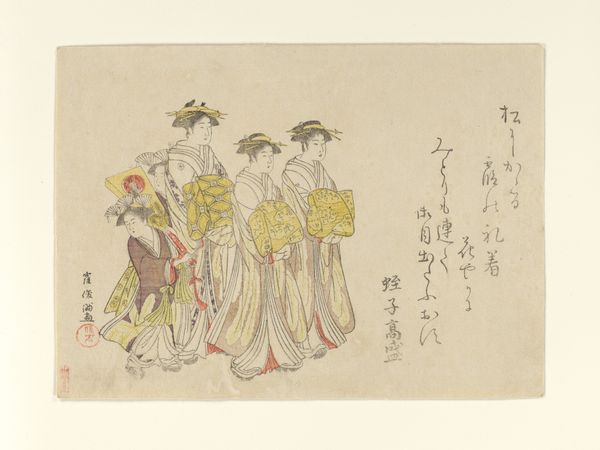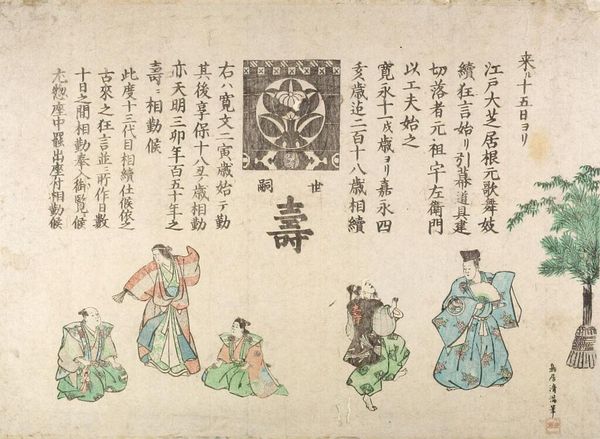
print, woodblock-print
#
portrait
# print
#
asian-art
#
landscape
#
ukiyo-e
#
figuration
#
text
#
woodblock-print
#
genre-painting
Copyright: Public domain
Curator: What a fascinating snapshot of leisure. The texture of the paper itself feels integral to the scene's effect, almost like rough, handmade stationary. Editor: Indeed. We're looking at "Cherry Blossom Viewing during the Genroku Period," a woodblock print from around 1830 by Toyota Hokkei. It depicts a group of figures enjoying the transient beauty of the sakura. What’s your read of this piece as a cultural artifact? Curator: For me, it's interesting to consider this as a mass-produced item, likely created within a complex workshop system, making a leisured activity accessible as a consumable image for a wider audience. It invites reflection upon class dynamics; the figures depicted and the labor involved in the print’s manufacture exist in sharp contrast. It highlights the societal value placed on certain kinds of leisure activities in 19th-century Japan. Editor: That’s a sharp reading. Hokkei clearly renders a certain class of people – note their fine robes, the entourage bearing what appear to be musical instruments or picnic supplies. The setting itself also matters: carefully tended gardens weren't accessible to everyone. Art in this time began to be used more and more often as a means to demonstrate your own values, even through the artworks that you choose to obtain, share, or destroy. How are societal changes impacting how these works circulate? Who controls which images persist through the passage of time? Curator: Precisely, it all hinges on access. The cost of these prints would have placed them within reach of the merchant class, who sought to emulate aristocratic pastimes. The act of viewing, and perhaps even collecting, such images was performative, a means of signalling one's aspirations. It’s an fascinating material study of cultural desire and production, made accessible through this specific printing process. Editor: And that desire fueled a booming industry, shaping artistic styles and themes. Hokkei was working within established conventions, appealing to contemporary tastes while also reinforcing existing social hierarchies. Curator: Understanding this circulation, how it reaches both the affluent collectors and lower artisans, sheds a vital light on how meaning and taste were manufactured. Thank you for expanding my knowledge on art consumption, looking at the broader landscape of this imagery, that it's not merely something seen but deeply valued within the social structure of the day. Editor: It goes to show, that by engaging with cultural history, it enriches how we experience and interpret this visual record from the past, appreciating art is a cultural act in itself.
Comments
No comments
Be the first to comment and join the conversation on the ultimate creative platform.
